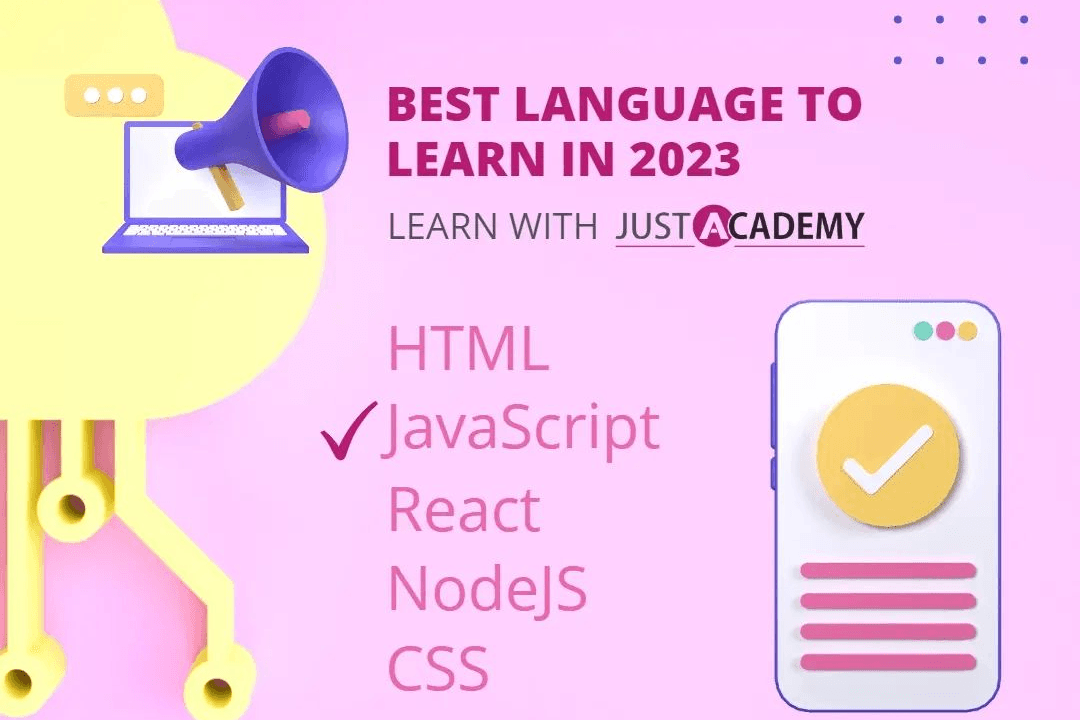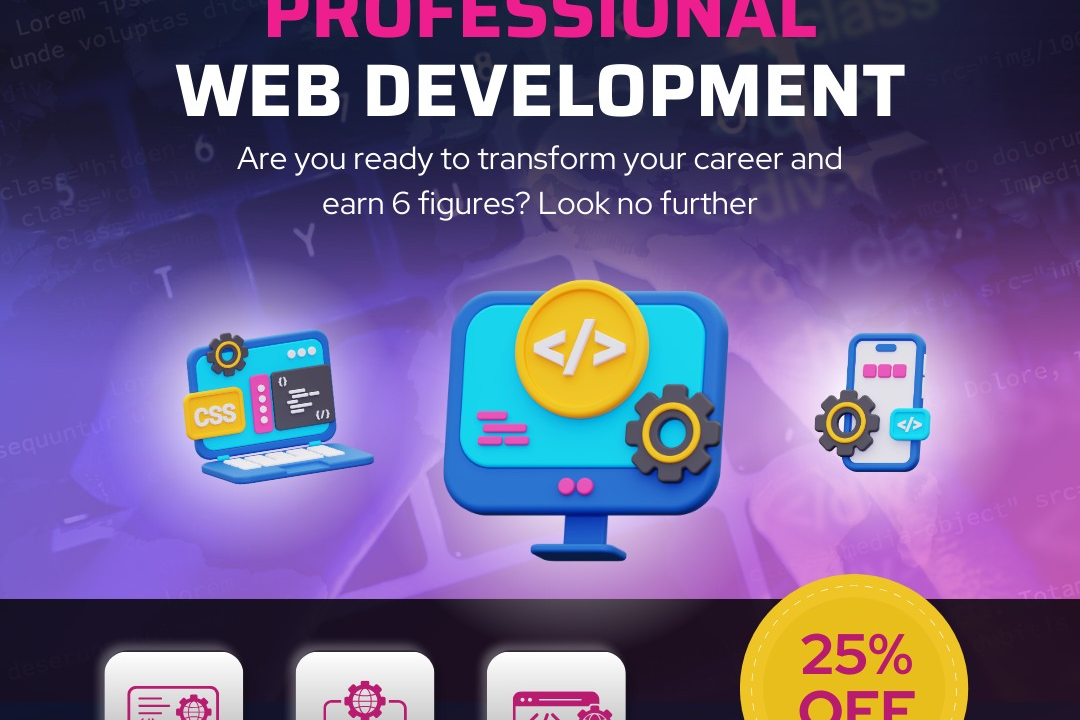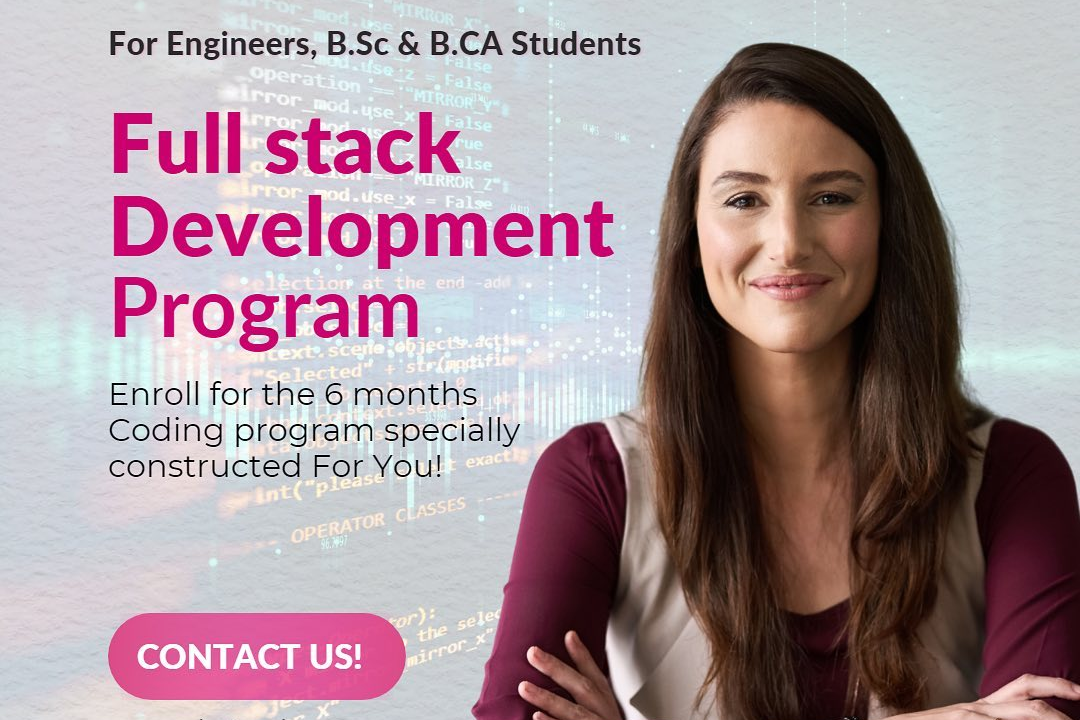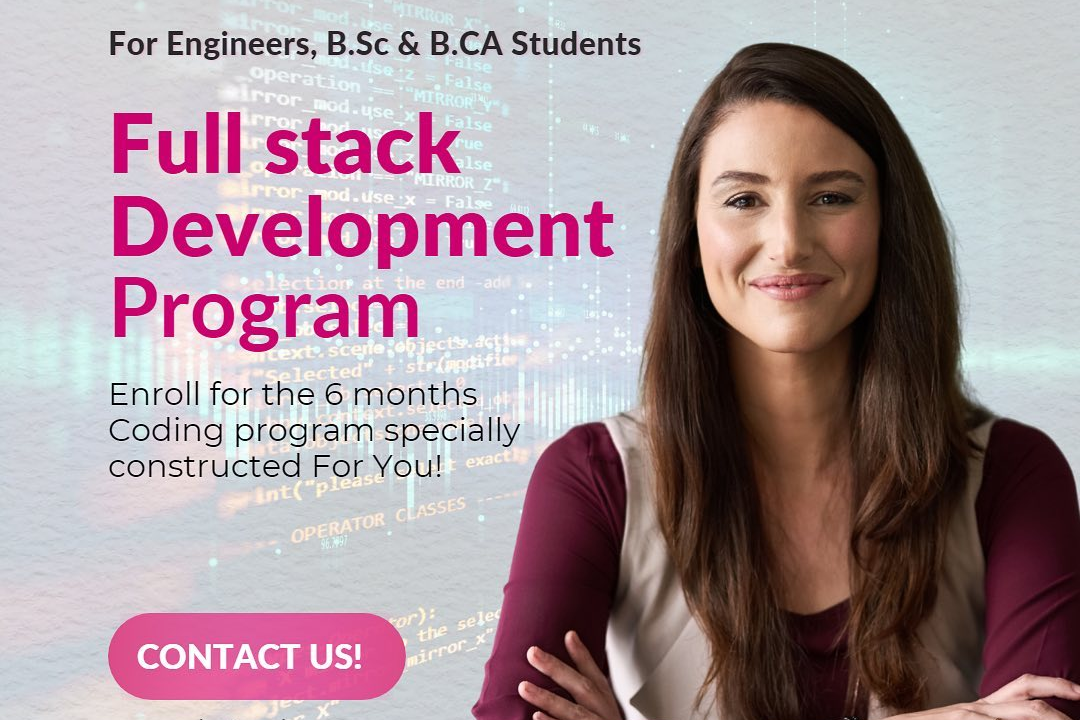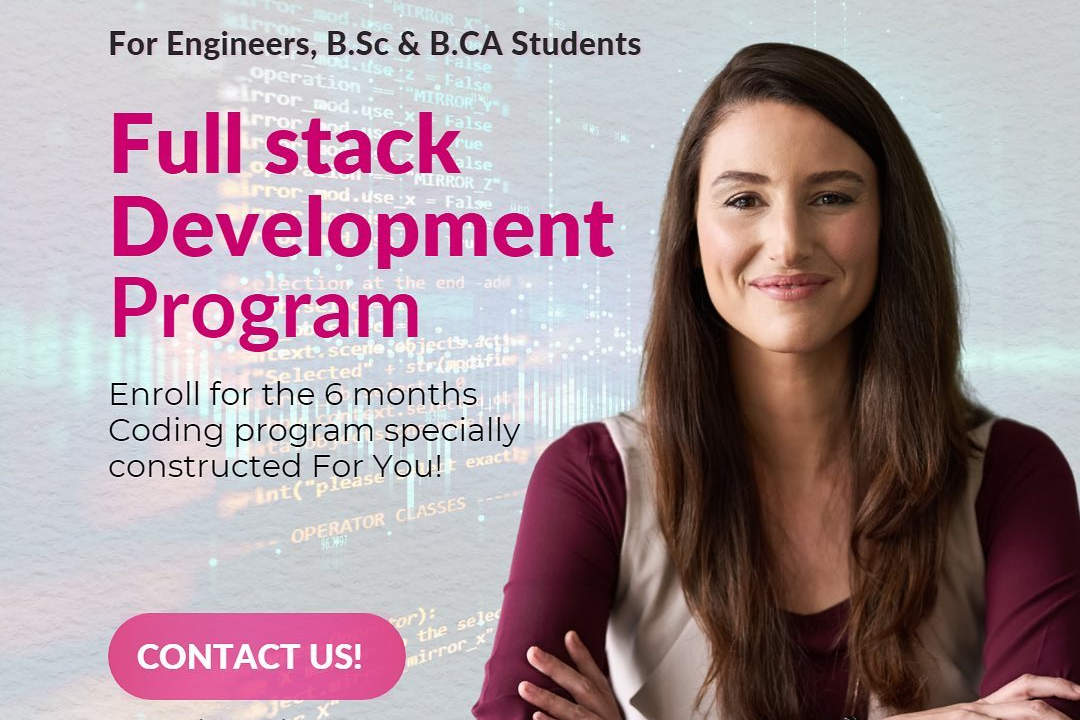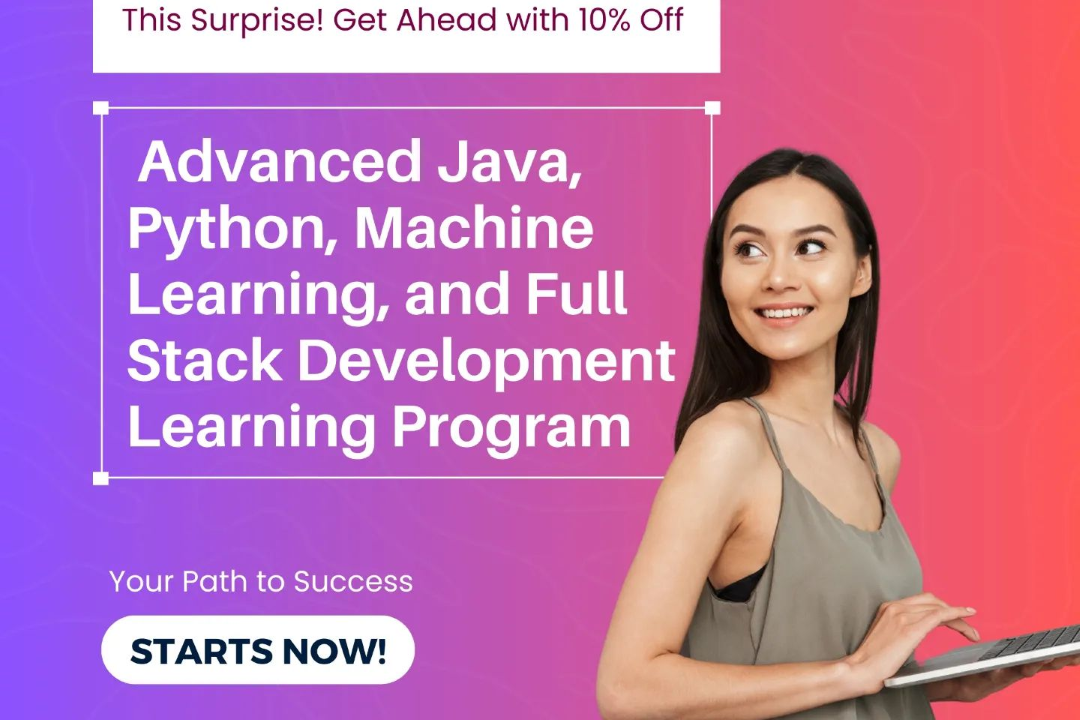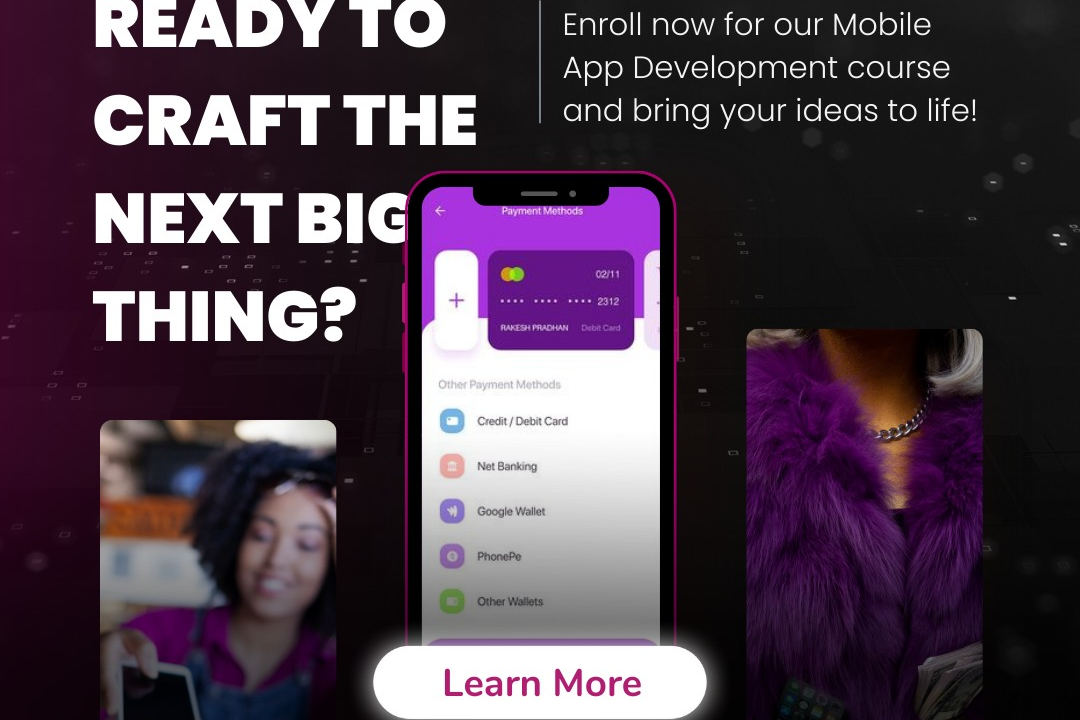How Do I Convert My PHP Program to Laravel
Converting your PHP program to Laravel involves transforming your existing code into a structured MV
How Do I Convert My PHP Program to Laravel
Converting your PHP program to Laravel is beneficial because it transforms your application into a more structured, scalable, and maintainable system by leveraging Laravel’s modern MVC architecture, built-in features, and security tools. This transition simplifies development with features like routing, database ORM (Eloquent), templating (Blade), and automated workflows, enabling faster updates, better organization, and easier integration of new functionalities. Ultimately, migrating to Laravel helps create robust, secure, and future-proof applications that are easier to manage and extend, supporting your company's growth and evolving technology needs.
To Download Our Brochure: https://www.justacademy.co/download-brochure-for-free
Message us for more information: +91 9987184296
Converting your PHP program to Laravel is beneficial because it transforms your application into a more structured, scalable, and maintainable system by leveraging Laravel’s modern MVC architecture, built in features, and security tools. This transition simplifies development with features like routing, database ORM (Eloquent), templating (Blade), and automated workflows, enabling faster updates, better organization, and easier integration of new functionalities. Ultimately, migrating to Laravel helps create robust, secure, and future proof applications that are easier to manage and extend, supporting your company's growth and evolving technology needs.
Course Overview
Learn how to transform your existing PHP programs into Laravel applications with this concise course, covering essential concepts, best practices, and step-by-step guidance to modernize your development process efficiently.
Course Description
This course guides you through converting your PHP programs into Laravel applications, covering key concepts, best practices, and step-by-step instructions to modernize your development skills efficiently.
Key Features
1 - Comprehensive Tool Coverage: Provides hands-on training with a range of industry-standard testing tools, including Selenium, JIRA, LoadRunner, and TestRail.
2) Practical Exercises: Features real-world exercises and case studies to apply tools in various testing scenarios.
3) Interactive Learning: Includes interactive sessions with industry experts for personalized feedback and guidance.
4) Detailed Tutorials: Offers extensive tutorials and documentation on tool functionalities and best practices.
5) Advanced Techniques: Covers both fundamental and advanced techniques for using testing tools effectively.
6) Data Visualization: Integrates tools for visualizing test metrics and results, enhancing data interpretation and decision-making.
7) Tool Integration: Teaches how to integrate testing tools into the software development lifecycle for streamlined workflows.
8) Project-Based Learning: Focuses on project-based learning to build practical skills and create a portfolio of completed tasks.
9) Career Support: Provides resources and support for applying learned skills to real-world job scenarios, including resume building and interview preparation.
10) Up-to-Date Content: Ensures that course materials reflect the latest industry standards and tool updates.
Benefits of taking our course
Functional Tools
1 - Laravel Installer and Composer: The Laravel installer, managed through Composer, is fundamental for setting up a new Laravel project quickly and efficiently. Students learn to use Composer, PHP’s dependency manager, to install Laravel and manage project dependencies seamlessly. This skill ensures that students can initialize, update, and maintain Laravel applications effortlessly, forming the basis for converting PHP programs into Laravel based applications. Understanding this tool helps students grasp modern PHP development workflows and streamlines the setup process, saving time and reducing potential errors in environment configuration. Mastery of Composer also enables students to add third party packages and plugins easily, expanding the functionality of converted applications and keeping them up to date with the latest features and security patches.
2) Integrated Development Environment (IDE) like PHPStorm or Visual Studio Code: These powerful IDEs offer extensive support for PHP and Laravel development. They provide syntax highlighting, code completion, debugging, and version control integration, which significantly improve coding efficiency. During the course, students get hands on experience leveraging IDE features to write, refactor, and test Laravel code, which is essential when converting legacy PHP applications. Efficient debugging tools and real time error detection help learners identify issues quickly, ensuring smoother migration and reducing downtime. Additionally, these IDEs assist students in understanding Laravel’s structure, routing, and controller logic, essential for effective conversion.
3) Database Management Tools such as PhpMyAdmin or MySQL Workbench: Database management plays a crucial role during PHP to Laravel conversion, as many legacy applications rely heavily on databases. Students learn to use PhpMyAdmin and MySQL Workbench to design, modify, and optimize database schemas, import existing data, and create migration files. These tools facilitate a visual interface for managing MySQL databases, which helps students understand data relationships and normalization techniques vital for Laravel’s Eloquent ORM. Proper database handling ensures data integrity during migration and allows learners to translate SQL queries into Laravel’s query builder or ORM methods, fostering best practices in database interactions.
4) Version Control Systems like Git: Version control is essential for tracking changes, collaborating with team members, and managing code revisions during the conversion process. Git enables students to maintain a history of modifications, revert to previous versions if necessary, and collaborate in teams through platforms like GitHub or GitLab. Students are trained to create branches for different stages of conversion, perform commits, and manage merge conflicts, ensuring an organized workflow. Learning Git instills discipline in code management and allows seamless rollback of changes, which is particularly important when dealing with complex legacy codebases requiring iterative transformation.
5) Laravel Packages and Ecosystem Tools such as Laravel Breeze, Laravel Sanctum, and Spark: These pre built packages accelerate the development process by providing authentication, boilerplate code, and scaffolding solutions. Students explore how to integrate and customize these packages within their Laravel projects to meet specific business requirements. Understanding the ecosystem helps students leverage community driven tools instead of reinventing the wheel, making the conversion process more efficient. These tools simplify tasks like user authentication, role management, and dashboard creation, enabling learners to focus on tailoring applications rather than building common features from scratch.
6) Testing Frameworks like PHPUnit and Laravel Dusk: Implementing automated testing is critical for ensuring the quality and reliability of converted applications. Students learn to write unit tests with PHPUnit, which validate individual components and functions during migration. Using Laravel Dusk, they can perform browser based testing, simulating user interactions to verify front end functionality. These testing tools help identify bugs early in the development cycle, reduce regressions, and ensure that the new Laravel application maintains the original functionality. Incorporating testing frameworks into the workflow also nurtures good development practices that promote sustainable and maintainable codebases during and after the conversion.
7) Migration and Data Seeding Tools: Laravel provides built in commands like artisan migrate and db:seed to manage database schemas and populate initial data. Students learn how to create and run migrations that define database tables matching the legacy application's structure. Data seeding helps populate the database with sample or production data, facilitating testing and development. Mastering these tools ensures a smooth transition from old database schemas to Laravel’s migration system, enabling consistent and repeatable database states throughout the conversion process. This knowledge simplifies future updates and rollback procedures, offering a robust foundation for scalable application development.
8) Front End Frameworks and Tools—Bootstrap, Vue.js, or React: Laravel supports smooth integration with popular front end frameworks, enhancing dynamic content rendering and user interface design. Students are trained to incorporate these frameworks into Laravel projects, enabling the development of modern, responsive web pages. Using tools like Bootstrap simplifies styling, while Vue.js or React allows for creating interactive components that enrich user experience. Learning to connect front end tools with Laravel improves students' ability to redevelop or enhance legacy PHP UI components, providing a comprehensive understanding of full stack development necessary for modern applications.
9) Command Line Interface (CLI) Tools: The Laravel artisan CLI provides a suite of commands that automate common development tasks such as generating controllers, models, middleware, and migrations. Mastering artisan commands allows students to rapidly scaffold application components, speeding up the conversion process. CLI tools reduce manual coding effort, minimize errors, and foster consistency across the codebase. They also support tasks like cache clearing, route caching, and database migrations, all integral to the migration workflow. Proficiency with CLI tools ensures students can efficiently manage and optimize Laravel applications, especially when working with large or complex codebases.
10) Debugging and Profiling Tools: Xdebug, Laravel Telescope, and Debugbar are essential for diagnosing issues, monitoring application performance, and optimizing code. During the course, students learn how to set up and utilize these tools to identify bottlenecks, errors, and inefficient code segments within their Laravel applications. Debugging tools help troubleshoot issues arising during the transformation from PHP to Laravel by providing detailed call stacks, database query analysis, and real time insights. Profiling tools aid in performance tuning, ensuring the converted applications are optimized for speed and resource utilization, which is vital for production readiness.
11 - Cloud Deployment and Containerization Tools like Docker and Laravel Forge: To deploy Laravel applications effectively, students explore Docker containers that simulate production environments on local machines. They learn to containerize applications for consistent deployment and testing environments. Laravel Forge simplifies cloud server setup, deployment, and scaling, enabling students to understand deployment pipelines. These tools teach best practices for deploying Laravel applications on cloud platforms like AWS, DigitalOcean, or Azure, preparing students for real world scenarios where scalable and manageable deployment processes are critical. Knowledge of containerization and deployment automation is key to maintaining robust, scalable applications post migration.
12) API Testing and Documentation Tools like Postman: API integration is a core aspect of modern web applications, especially when connecting Laravel back end with other services. Students learn to use Postman for testing RESTful APIs, creating and sharing test cases that verify API endpoints functionality. This skill ensures that external integrations remain intact during conversion and aids in debugging issues related to data exchange. Proper API testing and documentation facilitate smooth communication between front end and back end components, making applications more reliable, maintainable, and scalable over time.
13) Static Code Analysis and Security Tools such as PHPStan, Psalm, and SonarQube: These tools help identify potential code issues, security vulnerabilities, and adherence to best coding practices before and after conversion. Students learn to integrate static analysis into their development workflows to improve code quality and maintainability. Employing security tools ensures that the Laravel application is resistant to common vulnerabilities like SQL injection, cross site scripting (XSS), and CSRF attacks, providing a secure foundation for modern applications.
14) Payment Gateway Integration Tools like Stripe and PayPal SDKs: For e commerce or payment related applications, students explore how to integrate popular payment gateways into Laravel projects. This knowledge enables seamless processing of online payments, a common requirement during application modernization. Students learn to implement secure transactions, handle callback responses, and manage payment data effectively within Laravel, ensuring smooth financial operations in their converted applications.
15) Automation and CI/CD (Continuous Integration/Continuous Deployment) Tools such as Jenkins, GitHub Actions, or GitLab CI: Automating testing, deployment, and versioning processes streamlines the development workflow. Students are introduced to setting up CI/CD pipelines that automatically test and deploy Laravel applications whenever code changes are pushed. This practice reduces manual errors, speeds up release cycles, and ensures continuous delivery of bug free, updated applications, which is essential during application transformation projects.
16) Data Migration and ETL (Extract, Transform, Load) Tools: When converting legacy PHP applications, proper data migration is crucial. Students learn to use ETL tools or scripts to extract data from old databases, transform it to fit new schemas, and load it into Laravel managed databases. This process ensures data consistency and integrity, minimizing downtime and data loss during migration.
17) State Management and Caching Libraries like Redis or Memcached: To improve app performance, students explore caching strategies using Redis or Memcached within Laravel. They learn to cache database queries, session data, or entire views, significantly reducing response times. Effective use of caching and state management is vital for scalable, high performance applications, especially when dealing with large datasets or high user concurrency.
18) Localization and Internationalization Tools: For applications targeting multiple regions, it’s important to implement multilingual support. Students learn how to use Laravel’s localization features and manage language files, ensuring that converted applications are adaptable to various languages and regional formats. This prepares students to build globally accessible applications that meet diverse user needs.
19) Cloud Storage Integration like Amazon S3, Google Cloud Storage: Modern applications often need scalable storage solutions for media, documents, or backups. Students are trained to integrate cloud storage services into Laravel, enabling efficient media management and offloading storage responsibilities from local servers. This integration improves application scalability, reliability, and data redundancy.
20) Real time Communication Tools like Pusher or Laravel Echo: Real time features such as chat, notifications, or live updates are increasingly essential. Students learn to incorporate real time event broadcasting using Laravel Echo and services like Pusher, enabling applications to provide dynamic, real time interactions. This skill enhances user engagement and modernizes legacy PHP applications with real time capabilities.
21 - Audit and Logging Frameworks: Laravel offers robust logging features, but integrating additional audit tools helps track detailed user activities or data changes. Students explore how to set up comprehensive audit trails, crucial for applications requiring security, compliance, or debugging. Proper logging aids in troubleshooting, security monitoring, and maintaining application health over time.
22) Advanced Performance Optimization Techniques: Beyond caching, students learn about database indexing, query optimization, middleware best practices, and code profiling to enhance application speed. They also explore load balancing, server scaling, and asset optimization to ensure Laravel applications are performant under high load conditions.
23) Mobile First and Progressive Web App (PWA) Development: Students gain insights into making Laravel applications mobile friendly, leveraging tools like Laravel PWA packages. This enables applications to function smoothly on smartphones and tablets, catering to modern user expectations and expanding application reach.
24) Custom Package Development and Laravel Extensions: To tailor applications, students learn how to develop custom Laravel packages or extensions. This empowers them to reuse code, share functionalities, and create modular applications, which is particularly useful when managing complex or large scale conversions.
25) Monitoring and Application Performance Management (APM) Tools: Implementing tools like New Relic or Datadog helps students monitor application health in real time. These tools provide insights into performance bottlenecks, error rates, and server metrics, facilitating proactive maintenance and ensuring reliable application operation post conversion.
26) Ethical Hacking and Penetration Testing Tools: Understanding common security probes and testing methods allows students to evaluate their Laravel applications’ security posture. Employing tools such as Burp Suite or OWASP ZAP helps identify vulnerabilities before deployment, ensuring robust defenses against malicious attacks.
27) Documentation and Wiki Tools: Maintaining comprehensive documentation during migration ensures knowledge retention and ease of onboarding new developers. Students learn to create clear, structured documentation using tools like Markdown, Swagger, or Laravel specific documentation generators, promoting transparency and maintainability.
28) Workflow Automation with Task Runners like Gulp or Webpack: For asset compilation, minification, and bundling, students explore tools like Gulp or Webpack. Automating front end workflows results in optimized assets, faster load times, and an improved user experience in Laravel applications.
29) Microservices and API Gateway Concepts: Preparing students to develop and manage microservices architectures with API gateways ensures they can build scalable and modular Laravel applications. This approach is beneficial for large legacy projects requiring distributed services or gradual migration.
30) Community Engagement and Open Source Contribution Platforms: Encouraging students to participate in open source projects related to Laravel accelerates their learning and integration into the developer community. This exposure fosters knowledge sharing, best practices, and ongoing professional development.
These additional tools and concepts equip learners with a comprehensive understanding of modern web development practices, making their skill set versatile and tailored to complex Laravel migrations and application enhancements.
Browse our course links : https://www.justacademy.co/all-courses
To Join our FREE DEMO Session:
This information is sourced from JustAcademy
Contact Info:
Roshan Chaturvedi
Message us on Whatsapp:
Email id: info@justacademy.co
Add Background Color Program In Php

